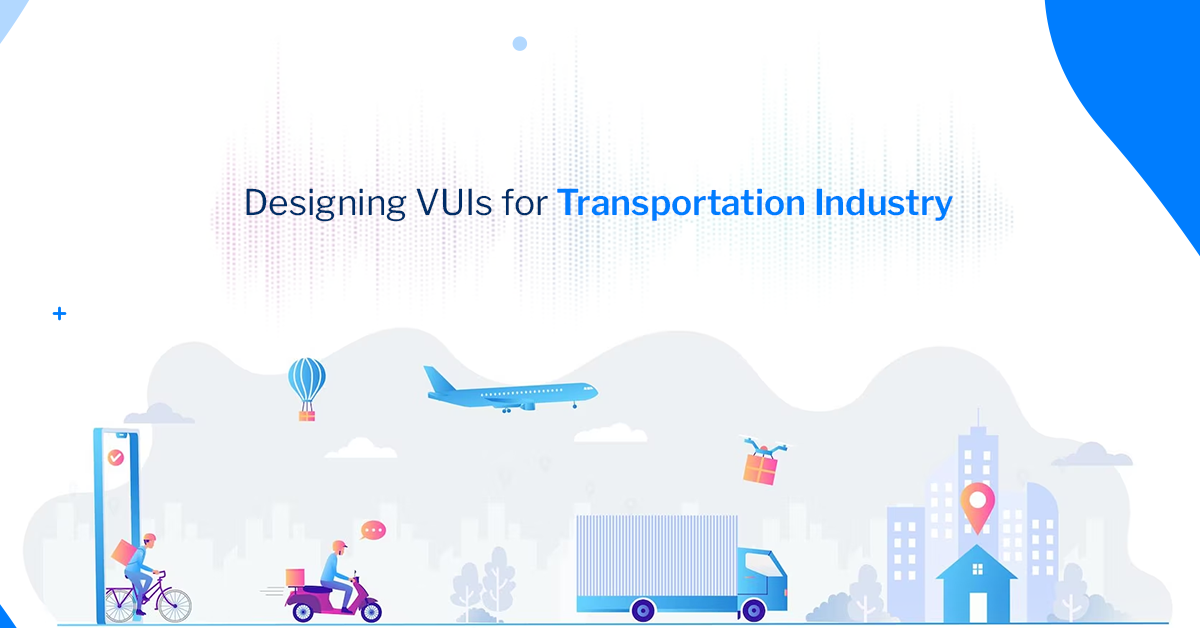Are you looking to enhance your user experience and engage with your customers in a more intuitive way? Look no further than voice user interfaces (VUIs).
VUIs offer a hands-free, natural language-based way to interact with technology, allowing for a seamless experience that can improve customer service and boost business outcomes.
In this blog post, we’ll dive into the benefits of VUIs for different industries and explore the challenges of designing effective VUIs.
Read on to learn more about VUIs and how they can benefit your business.
What are Voice User Interfaces?
Voice User Interfaces (VUIs) are interfaces that let users interact with technology using spoken commands or natural language. They don’t need a keyboard or mouse. Instead, they use voice recognition and natural language processing to understand and respond to spoken commands and questions.
You can find VUIs in smart speakers, virtual assistants like Siri and Alexa, and in-car infotainment systems. They give users a more natural and intuitive way to interact with technology. VUIs are helpful in hands-free environments or when traditional input methods aren’t practical.
VUIs have grown in popularity as voice recognition and natural language processing have improved. They have many advantages over traditional input methods, including accessibility, convenience, and efficiency.
Designing the Voice User Interface (VUI)
Once the user research and analysis are complete, designers can design the VUI. Here are some key considerations for VUI design:
- Know your target audience: Understanding your target audience is critical to creating a successful VUI. Designers must consider the demographics, interests, and preferences of their users to ensure that the VUI is relevant and effective.
- Choosing the right voice and tone: The voice and tone of the VUI should be aligned with the brand and target audience. For example, a VUI designed for a luxury car brand may use a formal tone, while a VUI designed for a casual clothing brand may use a more conversational tone.
- Creating a conversational flow: The VUI should be designed to mimic natural conversation, with clear prompts and responses. The flow of the conversation should be intuitive and easy to follow. It can be achieved through user testing and feedback.
- Incorporating natural language processing (NLP): NLP allows the VUI to understand and respond to natural language commands. It requires careful consideration of the language used by the target audience, including accents and dialects.
- Designing for accessibility and inclusivity: The VUI should be designed to be accessible to users with different abilities and needs. It may involve providing visual and audio cues, as well as designing for foreign languages and cultures.
- Use feedback loops: Incorporating feedback loops into VUIs can help improve accuracy over time. By allowing users to provide feedback on the VUI’s responses, designers can identify and address misunderstandings and inconsistencies.
- Provide clear prompts: Clear and concise prompts can help users understand what the VUI can do and how to interact with it. Designers should consider using visual cues or audio prompts to guide users through the interaction process.
- Test, test, test: Thorough testing is critical to ensuring that the VUI is effective and user-friendly. Designers should conduct extensive user testing to identify and address any usability issues or challenges with the VUI.
- Plan for scalability: As businesses continue to integrate VUIs into their operations, it’s essential to plan for scalability. Designers must consider how the VUI will grow and evolve over time to ensure that it remains effective and relevant.
- Consider privacy and security: VUIs often collect and store sensitive user data, so designers must prioritize privacy and security. Implementing measures such as data encryption and user authentication can help protect user data and prevent security breaches.
Voice User Interfaces (VUIs) for Different Industries
VUIs can be used in a variety of industries to improve user experience, customer service, and business outcomes. Here are some examples of VUIs in different industries:
Designing Voice User Interfaces (VUIs) for Healthcare Industry
Healthcare is one of the most critical industries where VUIs can have a significant impact. VUIs can facilitate communication between patients and healthcare providers, provide information about medical conditions and treatment options, and schedule appointments. Designing a VUI for the healthcare industry comes with its challenges, in any case.

Challenges faced in the healthcare industry
The healthcare industry has complexities, and designing a VUI to navigate them can be challenging. For example, medical terminology can be complex and difficult to understand for non-medical professionals. Additionally, the VUI must comply with patient privacy laws, which adds another layer of complexity.
Designing VUIs for hospital settings
VUIs can be used in hospitals to help patients interact with medical professionals and navigate the hospital. For example, patients can use a VUI to schedule appointments, request medication refills, or ask general health-related questions. Additionally, VUIs can be used to help navigate the hospital by providing directions to different departments or patient rooms.
Examples of successful healthcare VUIs
One example of a successful healthcare VUI is Ada, an AI-powered app that provides personalized health assessments and symptom analysis. Users can talk to Ada about their health concerns and receive personalized recommendations for treatment options.
Designing VUIs for Retail Industry
The retail industry is another sector where VUIs are becoming increasingly popular. VUIs can help customers browse products, check inventory, and make purchases with ease. Retailers can also use VUIs to provide personalized recommendations based on customers’ preferences and purchase history.
Importance of VUIs in the retail industry
VUIs can provide a more seamless and natural shopping experience for customers, allowing them to interact with the retailer without having to navigate through a complex website or app. Additionally, VUIs can be used to provide a more personalized experience for customers, which can increase customer loyalty and repeat business.
Designing VUIs for e-commerce websites
E-commerce websites can use VUIs to help customers browse products, check inventory, and make purchases. For example, customers can use a VUI to search for a specific product or ask for recommendations based on their preferences. Additionally, VUIs can be used to provide customer support, such as tracking shipments or processing returns.
Examples of successful retail VUIs
One example of a successful retail VUI is the voice-activated personal shopping assistant provided by Walmart. Customers can use the assistant to add items to their cart, place orders, and receive updates on their order status.
Designing VUIs for Banking and Finance Industry
The banking and finance industry has seen significant changes in recent years, and VUIs have played a vital role in this transformation. VUIs can be used to provide customer service, such as answering frequently asked questions, giving account information, and processing transactions.
Importance of VUIs in the banking and finance industry
VUIs can provide customers with a more efficient and convenient banking experience, allowing them to access their accounts and process transactions easily. Additionally, VUIs can help reduce wait times for customer service, which can improve customer satisfaction and loyalty.
Designing VUIs for customer service
VUIs can be used to provide customer service for banking and finance companies. Customers can use the VUI to check account balances, transfer funds, and pay bills. Additionally, VUIs can be used to provide information about the company’s products and services.
Examples of successful banking and finance VUIs
One example of a successful banking and finance VUI is Erica, the voice-activated assistant provided by Bank of America. Erica can help customers manage accounts, transfer funds, and pay bills.
Designing VUIs for Transportation Industry
The transportation industry is another sector where VUIs are becoming increasingly popular. VUIs can be used to provide navigation instructions, ticket bookings, and trip planning.

Importance of VUIs in the transportation industry
VUIs can provide a more seamless and efficient transportation experience for customers, allowing them to navigate through complex transportation systems with ease. Additionally, VUIs can be used to provide real-time information about delays or schedule changes, which can improve customer satisfaction.
Designing VUIs for navigation and ticket booking
VUIs can be used to provide navigation instructions for transportation systems, such as airports or train stations. Additionally, VUIs can be used to book tickets and provide real-time information about delays or schedule changes.
Examples of successful transportation VUIs
One example of a successful transportation VUI is the voice-activated assistant provided by Amtrak. Customers can use the assistant to book tickets, check train schedules, and receive real-time information about delays.
Challenges in designing Voice User Interfaces (VUIs)
While VUIs have many benefits, there are also some challenges that need to be addressed during the design process. Here are some of the most common challenges:
- Limited vocabulary: VUIs can only respond to certain words and phrases, limiting the user’s ability to communicate effectively. It requires careful consideration of the language used by the target audience and the use of synonyms and alternative phrasing.
- Contextual understanding: VUIs need to understand the context in which a command is given, which can be challenging. For example, a command to “play music” can mean different things depending on the context, such as the user’s location, mood, and preferences.
- Misunderstandings: VUIs can misinterpret a command or respond in a way that is not helpful, leading to frustration and confusion. It requires careful consideration of the VUI’s responses and the use of feedback loops to improve accuracy.
- Inconsistencies: VUIs can provide inconsistent responses depending on the user’s previous interactions or the context in which the command is given. Ensuring consistency requires careful testing and evaluation of the VUI’s responses.
- Privacy Concerns:-VUI designers need to address privacy concerns as well. Privacy concerns can arise when VUIs collect sensitive user data. Designers must implement measures to protect user data and ensure its collection and storage securely. When privacy concerns are not addressed, VUIs will be less effective and lack trust.
Conclusion
Despite the design challenges of voice user interfaces, VUIs are likely the next wave of tech in years to come. To ensure that your company not only survives this change but thrives in it, it is important that you stay conscious of this possible shift in our digital landscape.
By equipping yourself with a strong knowledge of what makes for a well-designed VUI, you can help future-proof your business and even improve your brand’s competitiveness.
So, don’t think of this article as me telling you that VUIs are going to take over the digital world—think of it as me giving you a head start on what may be the next frontier for digital interaction.
Ready to incorporate a voice user interface into your website or application? Contact the Best Website Designing Services in Hyderabad team today to learn more